photo © Costas Voyatzis for Yatzer.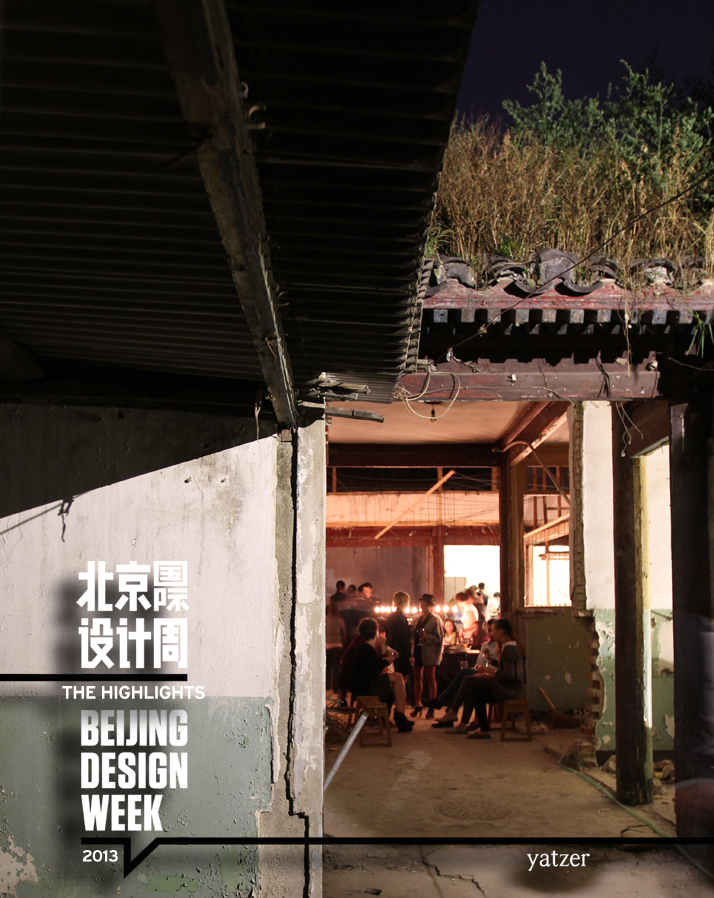
As I walked through hundreds of strategically placed thick black threads along the walls of an abandoned building that was all but ready to collapse, all I could do was wonder where they might lead me. But my curiosity propelled me forward along the building’s narrow corridors, along a totally black carpet, until I reached the end – and entered the most unique dining setting imaginable (video preview). Aimed at increasing the appetite, not only with the impromptu cooking sessions that were about to take place but also providing a taster of what was about to happen during the next days, this was it, ... my first impression after my arrival to the Chinese capital which would prepare me for a journey into the unexpected... to the multitude of unique events that took place during Beijing Design Week from the 28th of September till the 6th of October 2013.
The image I've just described is ''LÇo shù kÄi xÄ«n huÄ'' (Eng: Old Tree - New Blossoms), the spatial installation by reMIX studio in a space destined to become part of The Orchid Hotel located on 38 Paizi Hutong in Beijing’s Dashilar area. And for all of you who may be wondering exactly what a ''hutong'' is, hutongs are ancient narrow alleyways that used to connect different courtyard residencies in old Beijing city. Having witnessed the passage of time for hundreds of years, during BJDW they witnessed the passage of design aficionados from all around the world who had made the pilgrimage to Beijing to discover ''Dashilar Alley'' - arguably the most dynamic section of Beijing Design Week followed by ''CCD/The Community'' in Caochangdi Art Village and the ''751 Industrial Park''. And the reason? To explore the series of projects, events, exhibitions and installations on display inside and outside of the almost collapsing traditional dwellings of the Dashilar area dating from the Ming Dynasty (1368-1644); some of which are begging for renovation. For this purpose, Beijing Dashilar Investment Limited (BDI) and BJDW 2013 launched Dashilar Pilot, inviting top international and local designers, architects, academics and professionals to think through the regeneration of this historic district which seems to have been left out in the cold in the otherwise fast paced modernization of the whole city. Some of the long term renovation projects include the "Micro-Hutong" building experiment by Standard Architecture on the Yangmeizhu Hutong, Michael Young’s striking re-imagination of the traditional hutong toilet which aims to improve the neighborhood’s facilities and Matali Crasset's ''Unlimited Hutong'' renovation proposal on 6 Cha'er Hutong, an open house for all of its inhabitants to socialize and experiment with creative activities while young designers in residence will interact with the local community. Finally, ''Re-up'' the first project by designer and entrepreneur Lin Lin ç³ç³ of Jellymon together with Spoonful of Sugar which is scheduled to open in November 2013 aiming to ''Re-up'' the entire Dashilar neighbourhood through the creation of a holistic upcycle-themed food & beverage and retail space inside a former electrical-relay device factory in a historic art-deco building on 59 Tie shu Xie Jie Hutong.
''LÇo shù kÄi xÄ«n huÄ'' spatial installation by reMIX studio.
''LÇo shù kÄi xÄ«n huÄ'' spatial installation by reMIX studio.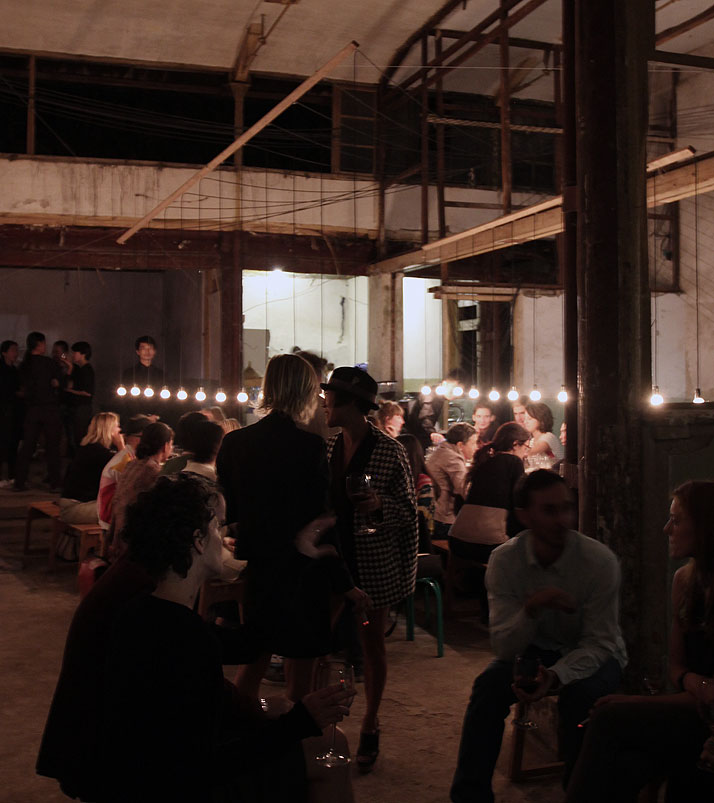
Other exhibits included the Dutch design agency SALON, founded in July 2010 by Gijs Stork and Manon Schaa, who invited 10 Dutch designers to explore the Dashilar area and take over specific dwellings in collaboration with 10 Chinese designers in order to present their collaborative projects as part of the Amsterdam Guest City Program (initiated in London in 2011 and Milan in 2012). My favorite was the collaboration between Dutch designer Sander Wassink and local shoemakers who gave both a new life and style to old, ugly shoes after an intense surgery process that was definitely worth observing to see the end result: reborn shoes that were worth wearing!
The design of everyday objects in Russia and China from the 1950’s to 1980’s was the main subject of the COMMON OBJECTS exhibition curated by Peipei Han and Evgenia Novgorodova which was brought to BJDW by the Moscow Design Museum at Dashilar's FACTORY on 8 Dawailangying Hutong. Other exhibitions also took place in the same building on the entrance of which we detected the ''Scagnel'' concrete stools that Italian designer Luca Nichetto dedicated to the area for tired BJDW visitors to rest their weary feet to be later used by local residents who may use them for a multitude of purposes, even including eating off them. It's worth mentioning that Nichetto has also completed his first ever architectural project in Asia: the Tales Pavillion at Beijing's Lido Garden, with a dynamic façade made of 1,200 brass tubes which hosts the new cutting edge showroom for China’s sole representative of world renowned brands including Foscarini, Ibride, Petite Friture, Diamantini & Domeniconi and Seletti.
The LCD Pavilion at the entrance of Dashilar's FACTORY (and the ''Scagnèl'' concrete stools by Luca Nichetto.) Photo © Costas Voyatzis.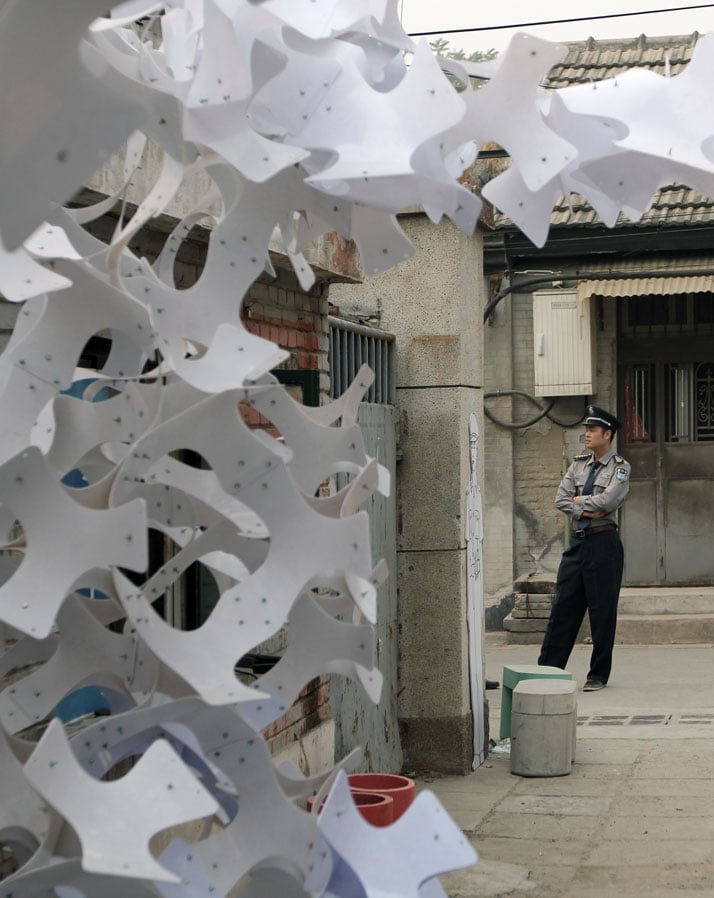
One of the many hutongs in Dashilar district. Photo © Costas Voyatzis.
Northeast of the Dashilar district, two equally important sites of Beijing Design Week showcased dozens of cutting edge projects by international and local creative minds (that required a lot of walking around their endless industrial grounds). The first one being 751 D-Park located next to the 798 Art District (where the famous Ullens Center for Contemporary Art (UCCA) is located), which hosted the 751 Intl Design Festival on the grounds of a former power plant. On that same spot, newly established Tongji University Press presented an exhibition of their brand new ''Luminous City'' series inside the carriages of a train, engaging two of China’s most acclaimed architects, Zhang Yonghe and Ma Qingyun. Some meters away, the ''Swarovski Digital Crystal'' landmark London exhibition was brought to Beijing where we were able to explore the concept of memory in the digital age inside a temporary black labyrinth designed by architect Ma Yansong of MAD Architects. The exhibition featured new works by both established and emerging Chinese designers with Naihan Li's Crystal Puzzle standing out. The other important BJDW site was CCD, the notorious Caochangdi Art Village on the city’s outskirts which hosts a self-motivated group of galleries. Infamous contemporary artists such as Ai Weiwei who moved from the US to China in 1999 has not only built a studio-house - his first architectural project - but has also designed a Red Brick complex of buildings housing galleries and artist studios which has upgraded the reputation of the entire village attracting more and more creative tenants to its grounds along the way. In one of its courtyards, we detected the CCD pavilion, a ground-breaking stage system equipment made of copper pipes and ceramic-vases as speakers by world-known contemporary artist Liu Wei, with the technical support of RAWR-Lab.
The RED BRICK complex by Ai Weiwei in Caochangdi Art Village. Photo © Costas Voyatzis.
The CCD pavilion, a ground-breaking stage system equipment made of copper pipes and ceramic-vases as speakers by world-known contemporary artist Liu Wei, with the technical support of RAWR-Lab. Photo © Costas Voyatzis.
A little further afield from Dashilar, 751 and Caochangdi, we didn't miss the chance to see what was going on around the Chaoyang and Dongcheng districts. In the Sanlitun area of Chaoyang at the Nali Patio we discovered David Xing & Jack Xiang, the talented minds behind 'Make+' studio (å+) and their successful endeavours to design traditional furniture with different materials (their Translucent rammed earth divider and traditional Chinese chairs fabricated from Red Acryl were a great discovery). On 35 Mao’er Hutong in Dongcheng, inside the former house of China’s Last Empress located between Houhai Lake and Lama Temple and a breath away from the bustling Nanluoguxiang Hutong, we were bowled over by the enthusiasm of Isabelle Pascal, a French entrepreneur who moved to Beijing back in 2007. Driven by the ''5 Elements'' of Chinese philosophy {Wood (æ¨ mù), Fire (ç« huÇ), Earth (å tÇ), Metal (é jÄ«n) and Water (æ°´ shuÇ)}, Pascal created the ''WUHAO curated-shop'' in 2010 which showcases and fosters many of the most talented and eco-conscious Chinese creative minds ((Xiao Tianyu è天å®, Su Chunrong èæ¥å®¹, Zheng Haichen éæµ·æ¨, Wang Kaichuan çå¯å·, Wang Hao çæ, Zhang Cheng å¼ æ¨, Huo Yi Jin éå¥è°¨,Wu Mian å´å to name a few). Unfortunately, as is often the case, beautiful things don't last forever and Pascal is searching for a new space in Beijing to house WUHAO after the government decided that she must leave her current space. That said, we’re sure that her passion and enthusiasm will lead her to the next best spot in the city and hope to discover her behind another traditional Chinese red door during BJDW 2014!
The entrance of WUHAO curated-store in Beijing. Photo © Costas Voyatzis.
Like a lotus flower which has the ability to grow through mud, Beijing Design Week 2013 unveiled the potential of an evolving creative generation with the power to shake up the other side of the planet through a blend of collaborations between Asian and International talents. Despite the fact that there were days when it was literally impossible to breath due to Beijing’s notorious heavy pollution, talented immigrants, like the Italian, now Beijing-based curator and creative director of BJDW 2013, Beatrice Leanza, have brought their international expertise and a breath of fresh air to rejuvenate an entire creative community of local talents. And it is elements and talents such as these that are sure to make Beijing Design Week an important event in design aficionados’ calendars for years to come.
Discover some of the above mentioned plus many other Highlights of BJDW 2013 through the pictures that follow.
Neill McLean Gaddes, Co-curator, Dashilar Pilot talks to Crane.tv.
Michael Young Studio developed a concept for Public Toilet in Dashilar district.
The DUPIN series of furniture by Studio LL // FAI LAU and TONY LAW. The modification of old furniture to new pieces of interior objects. (CCD)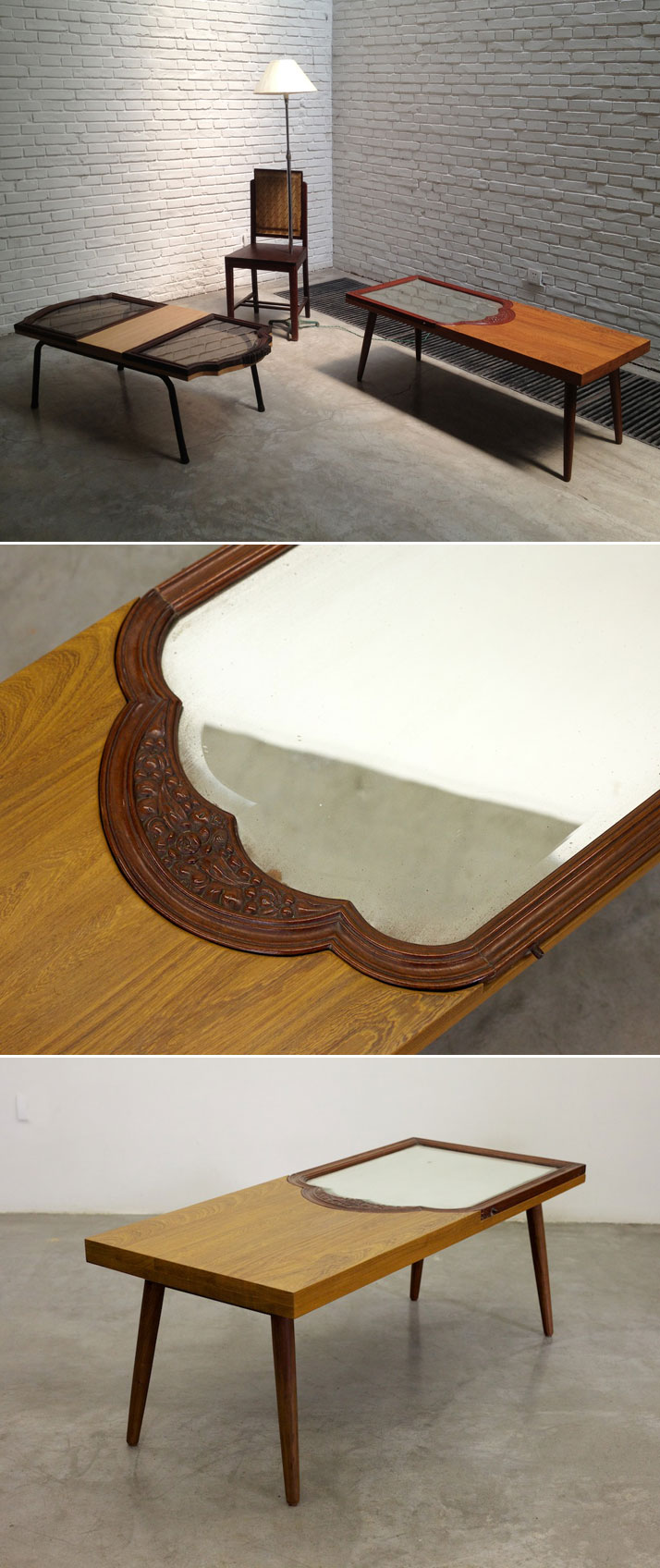
The HIVE pouffe made of over 1600 pale gray crocheted linen shapes by Monomoka.
The DREAMING project of Femke van Gemert made out of 100% recycled textiles. Photo © Costas Voyatzis.
The DREAMING project of Femke van Gemert made out of 100% recycled textiles. Photo © Costas Voyatzis.
''Poo-tsh!'' pillows by Joyce LIU & Valery Vauban-de-Montaudon (VVdM). Photo © Costas Voyatzis.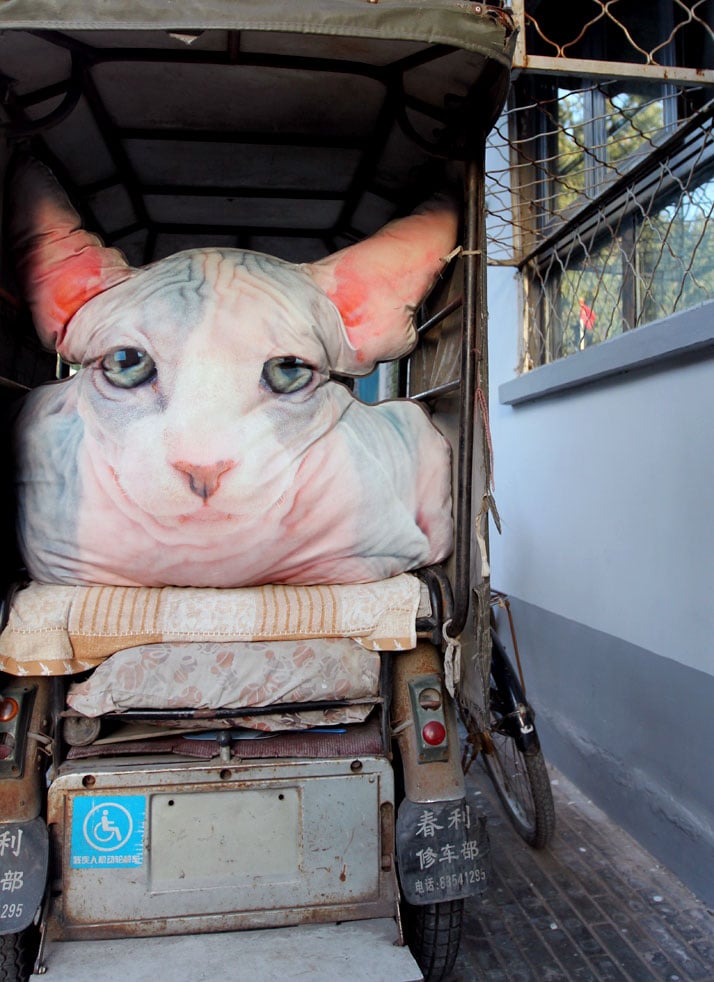
''Poo-tsh!'' pillows by Joyce LIU & Valery Vauban-de-Montaudon (VVdM). Photo © Costas Voyatzis.
The Crystal Puzzle by Naihan Li for the DIGITAL CRYSTAL exhibition of Swarovski.
''Memory is artificial; it is the abstract impression of combined experiences recorded by the mind, yet each moment, existing only once, holds a unique Crystal Puzzle is a tactile work that invites visitors to play with and experience Swarovski’s crystal in a new way; incased within various layers of a wooden structure, the crystal and LED lights at the ball’s core sparkle as it emits varying forms of light and shapes as the viewer rolls and interacts with the piece.''- Naihan Li.
The amazing CRATES furniture series by Naihan Li on display at the WUHAO curated-store in Beijing. Photo © Costas Voyatzis.
The CRATES replicate finely finished shipping container exteriors but open to reveal instantly functional household or office environments. Created for Beijing’s shifting urban playground where industrial and artist spaces are quickly discovered and soon destroyed, the furniture is mobile so you can roll it right in to your studio, loft, or gallery.
The CRATES furniture series by Naihan Li. (Crate Wardrobe)
The CRATES furniture series by Naihan Li. (Crate Wardrobe)
The CRATES furniture series by Naihan Li. (Crate Work Office)
The CRATES furniture series by Naihan Li. (Crate Work Office)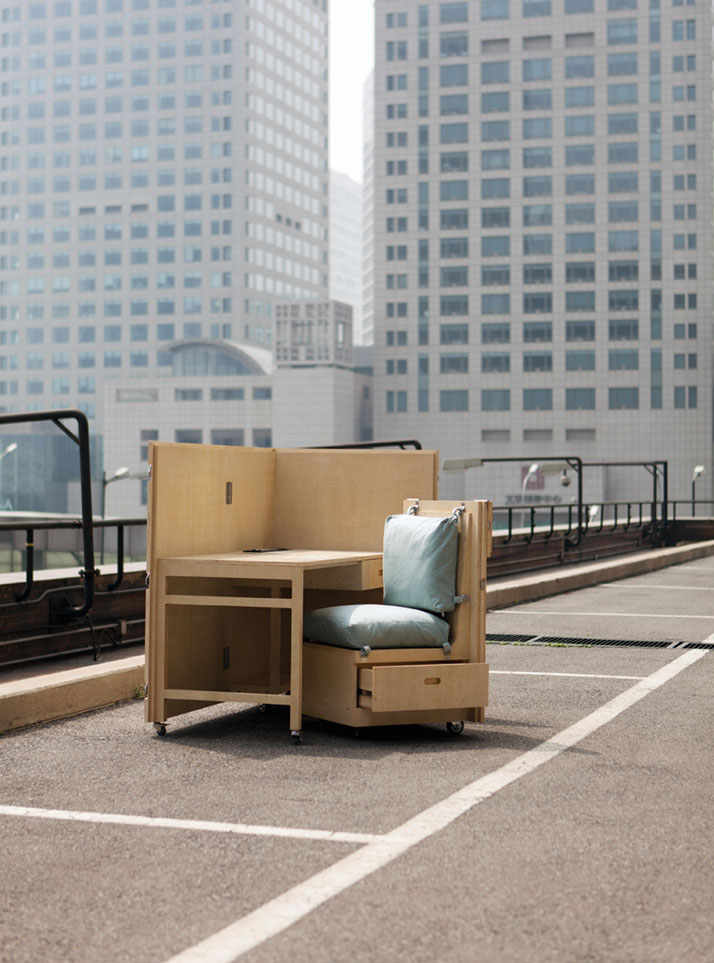
The Dancing Wooden Skin Body Extension Jewellery designed by Elaine Ng Yan Ling on display at WUHAO.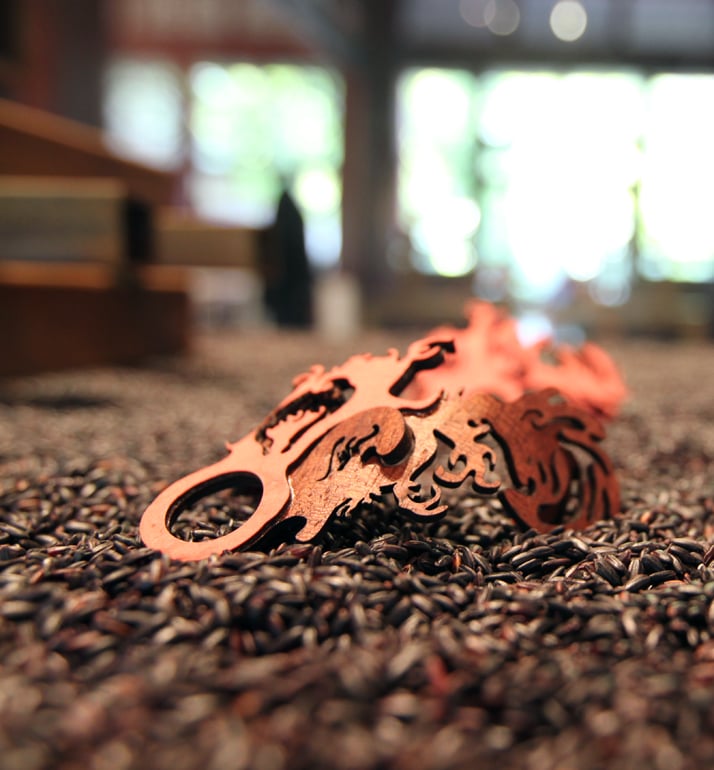
HARMONY chair by Xiao Tian Yu for WUHAO Limited Edition series. Photo © Costas Voyatzis.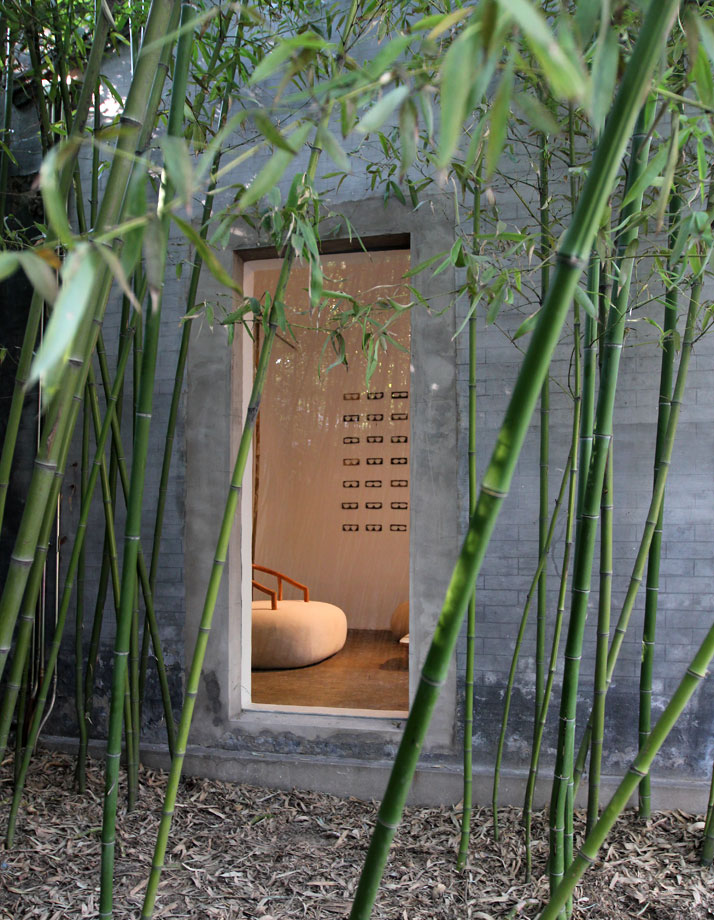
NEW BRANCH bench by Zheng Hai Chen for WUHAO Limited Edition series. Photo © Costas Voyatzis.
The cement bracelet and earrings of the ''DISPLACEMENT | Architecture to the body scale'' project by MicroMacroLab.
The cement bracelet and earrings of the ''DISPLACEMENT | Architecture to the body scale'' project by MicroMacroLab.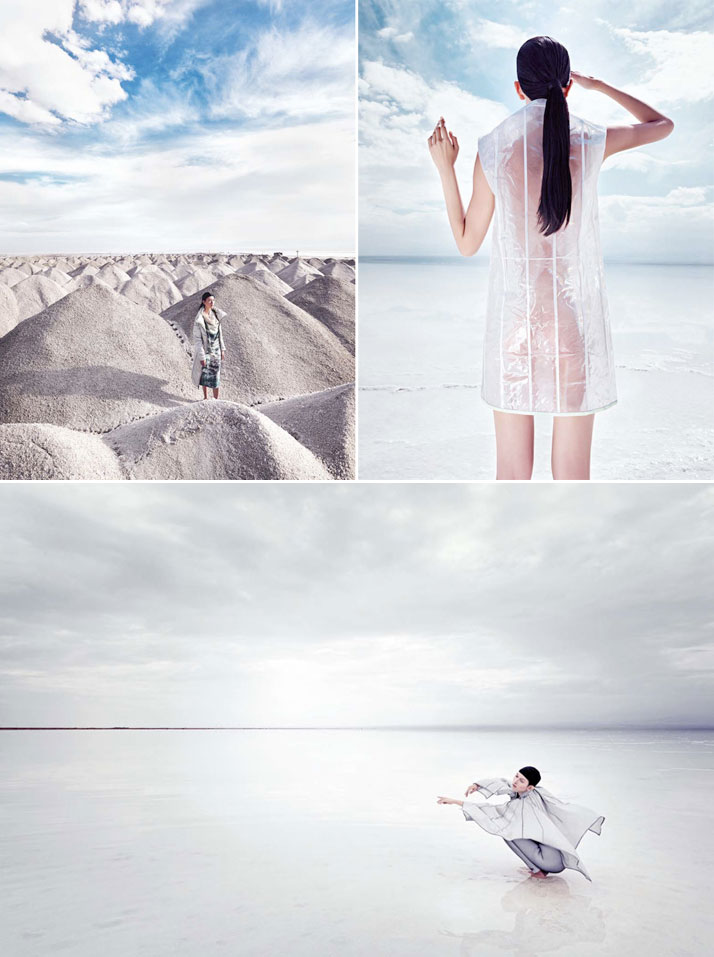
The Eternal Infinity and the ''Instant Heaven'' projects by MPMP's Katrin Reinfurt. Photo © Matthieu Belin.
''ABSOLUTE DESIGN by Chinese'' exhibition at Xin Dong Cheng Space for Contemporary Art (798 old Factory). Photo © Costas Voyatzis.
Works by Bu Di, Chen Xuan, Huang Zhiyang, Lai Mei, Li Naihan, Shao Fan, Shi Jianmin, Wang Shanxiang, Wu Zhuoyang, Xiao Tianyu.
''ABSOLUTE DESIGN by Chinese'' exhibition at Xin Dong Cheng Space for Contemporary Art (798 old Factory). Photo © Costas Voyatzis.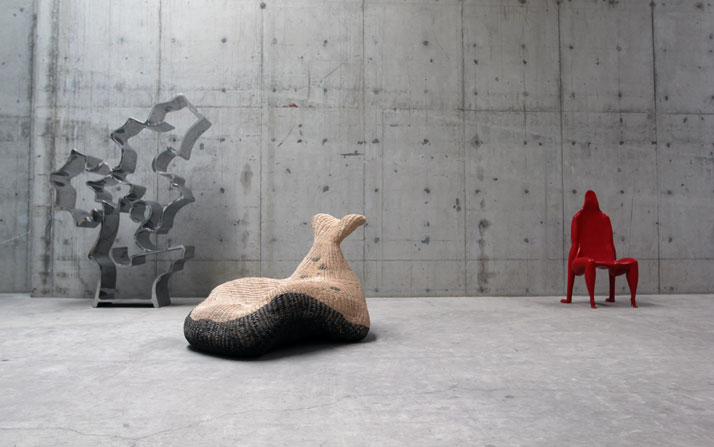
Guo Binï¼Taihu Stone Bookshelf No.1ï¼stainless steelï¼160×220×41cm, 2010 // Lai Mei, Rattan Chairï¼wicker , 88×90×123cm, 2011 // Luo Xu, Legs Symphony, painted fiberglassï¼125×63×70cm, 2001.
''ABSOLUTE DESIGN by Chinese'' exhibition at Xin Dong Cheng Space for Contemporary Art (798 old Factory). Photo © Costas Voyatzis.
Zhuji table by internationally awarded artist and designer Song Tao.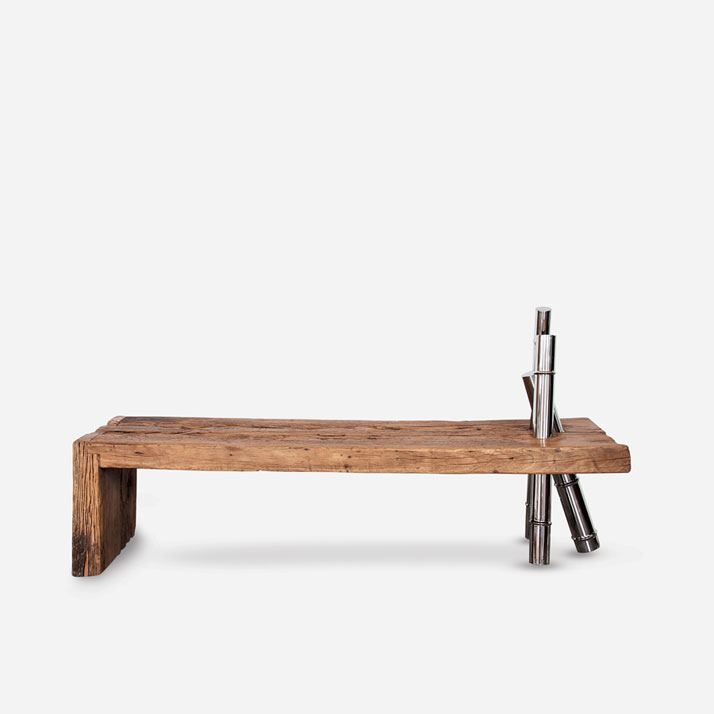
Milkywave by AIDIA STUDIO. It consists of 1664 reused glazed ceramic yoghurt bottles reconstituted into a looping wave of light. Although this installation was made for BJDW 2012 it's still on display at Dashilar's FACTORY. Photo © Costas Voyatzis.
The Manifesto Exhibition Pure Hardcore Icons at Dashilar's FACTORY. The exhibition includes the original collages from the book Pure Hardcore Icons (Artifice Books on Architecture, 2013), as well as sculpture/objects, animations, and paintings by Cruz Garcia and Nathalie Frankowski (WAI Architecture Think Tank). Photo © Costas Voyatzis.
''Scagnèl'' concrete stool by Luca Nichetto. Photo © Daniele Dainelli for China Design News.
"Micro-Hutong" building experiment by Standard Architecture. Photo © Costas Voyatzis.
"Micro-Hutong" building experiment by Standard Architecture. Photo © Costas Voyatzis.
The entrance of the "Micro-Hutong" project by Standard Architecture. Photo © Costas Voyatzis.
The Translucent rammed earth divider by 'Make+' studio (å+) / David Xing & Jack Xiang. (video demonstration of the material).
''Beijing Living Room'' photo series by MDDM Studio ltd / Momo Andrea Destro & Margret Luise Domko.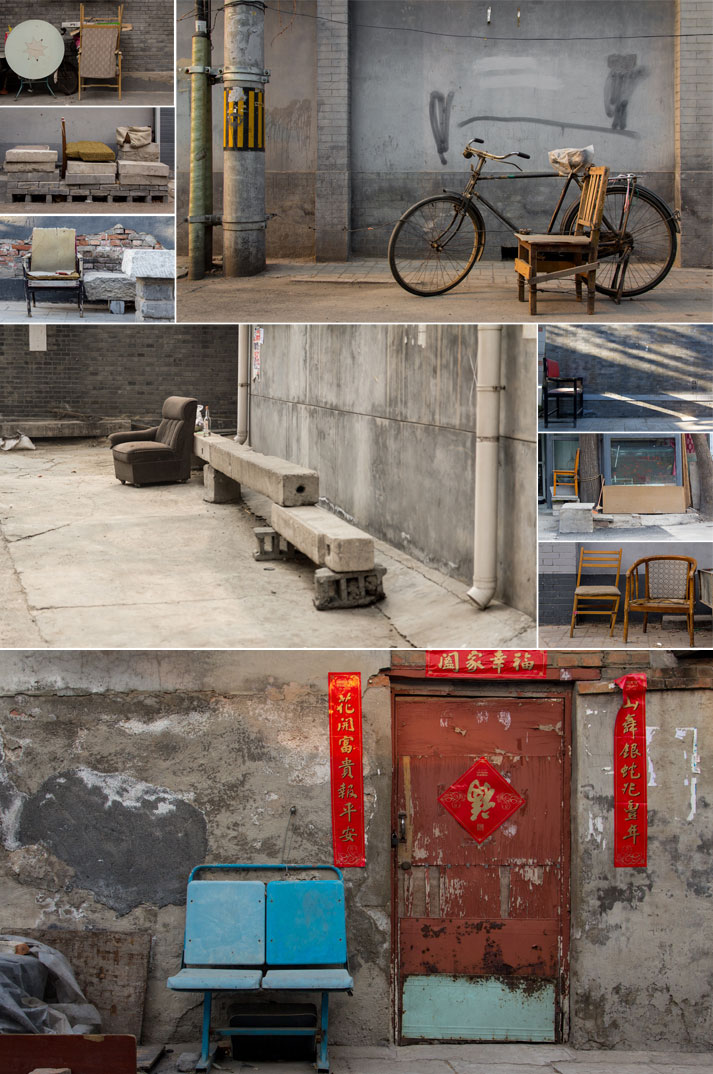
Live With Furniture by Zuo design.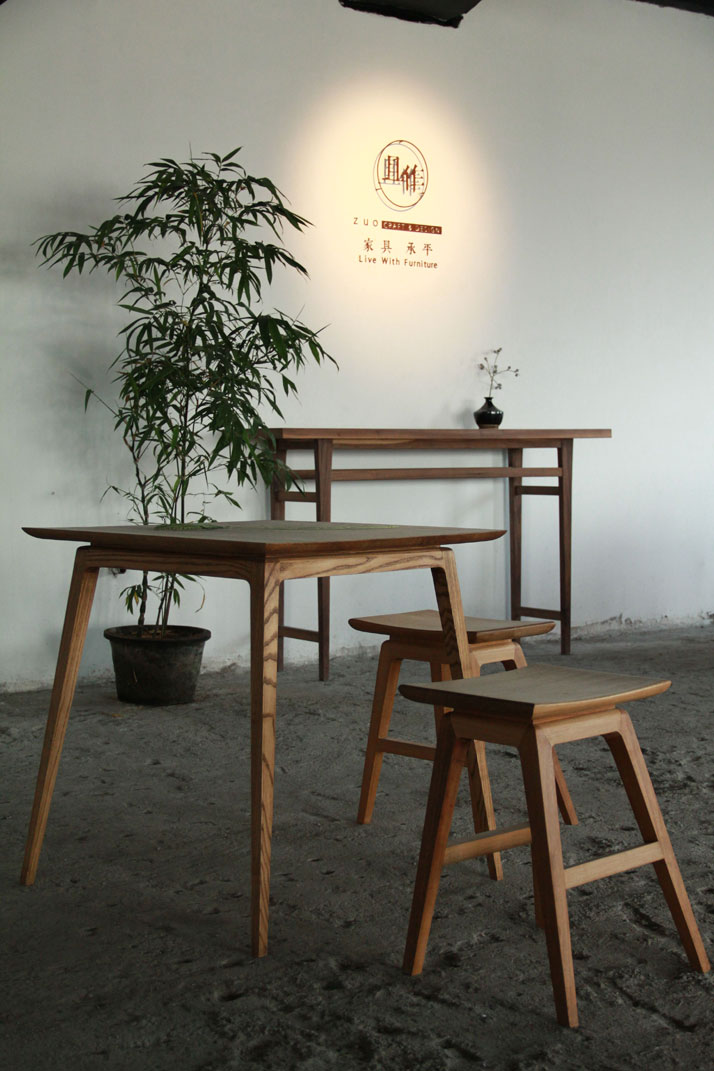
The Chinese replica of the WOOD RING bench by Chris Kabel.
Traditional Chinese chair fabricated from Red Acryl by 'Make+' studio (å+) / David Xing & Jack Xiang.
Traditional Chinese chair fabricated from Red Acryl by 'Make+' studio (å+) / David Xing & Jack Xiang.
Traditional Chinese chair fabricated from Red Acryl by 'Make+' studio (å+) / David Xing & Jack Xiang.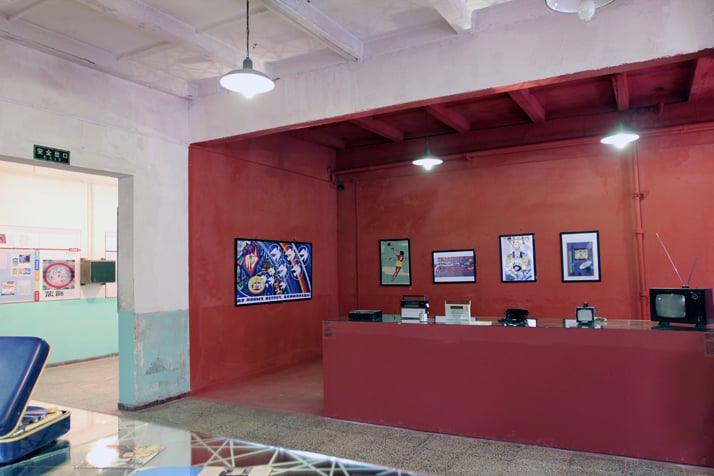
Common Objects: Soviet and Chinese Design 1950-1980s. Photo © Costas Voyatzis.
‘LOVE AND WAR – OXYMORON’ exhibition by Petrovsky & Ramone in collaboration with Eva de Laat. (CCD)
ROOD color study by Studio rENs (Renee Mennen and Stefanie van Keijsteren) in collaboration with the students of the Beijing Institute of Clothing Technology.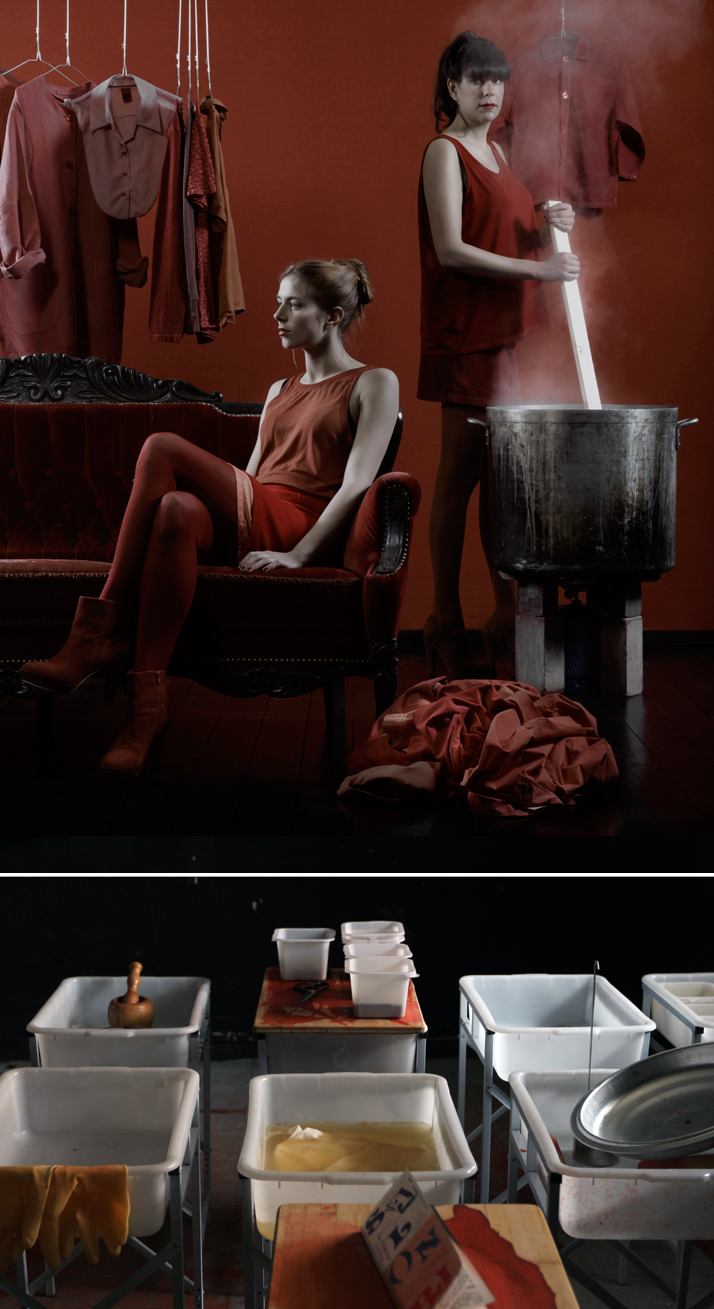
''Illusory Memories'' by Mo Yi at Three Shadows + 3 Gallery.
Artist: Mo Yi, Title: Mao (1), Media: 340 colored ceramics blocks, text, red thread, Size:97cmx82cm, Edition: 5, Year: 2011-2013.
''Illusory Memories'' by Mo Yi at Three Shadows + 3 Gallery.
Artist: Mo Yi, Title: People of the World Unite, Media:Acid free art paper, Size:110 x 161 cm, Edition: 9, Year: 2011-2013
The Dashilar Flagship temporary shoeshop by Sander Wassink in the Hutong Dashilar in Beijing. It used cheap, counterfeit shoes as a raw material for it's new Shoes. The Cutting and re-editing was done in the shop and the assembling was executed by local Dashilar shoemakers.
The Dashilar Flagship temporary shoeshop by Sander Wassink.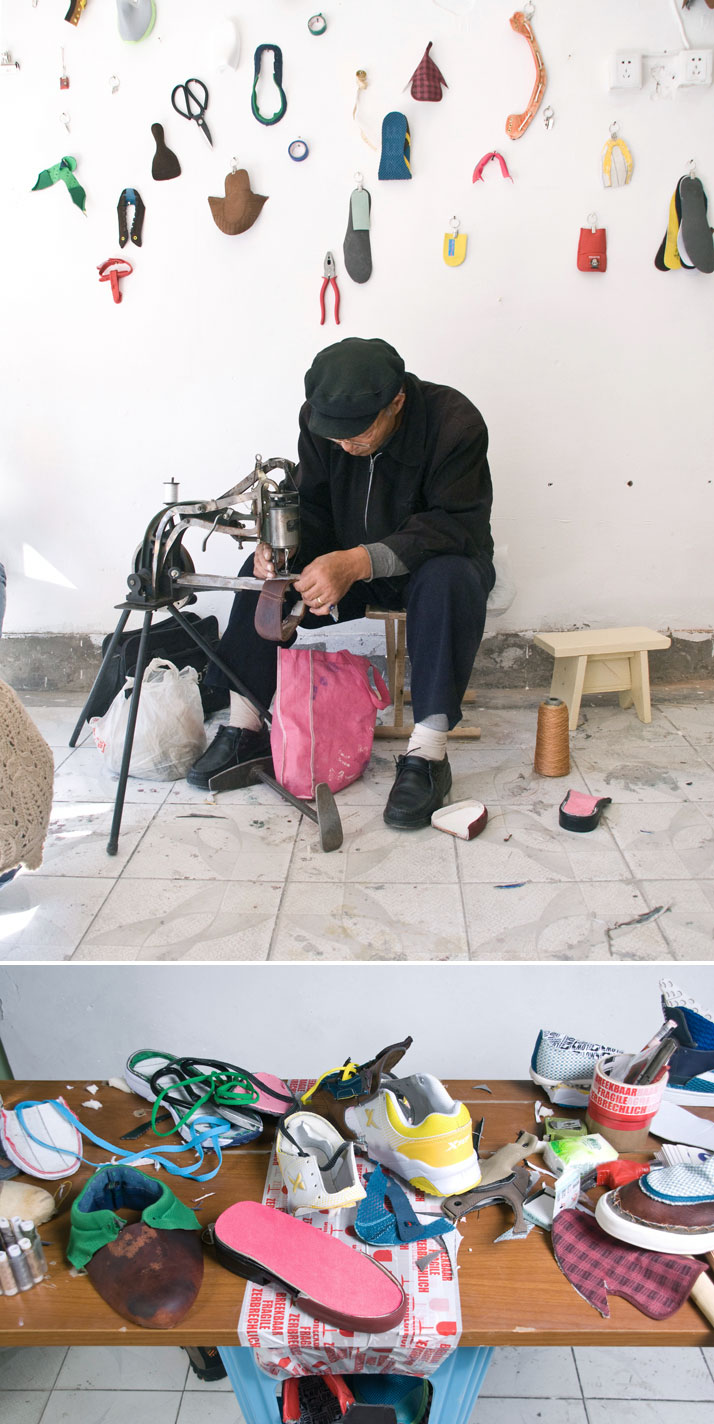
The Dashilar Flagship temporary shoeshop by Sander Wassink.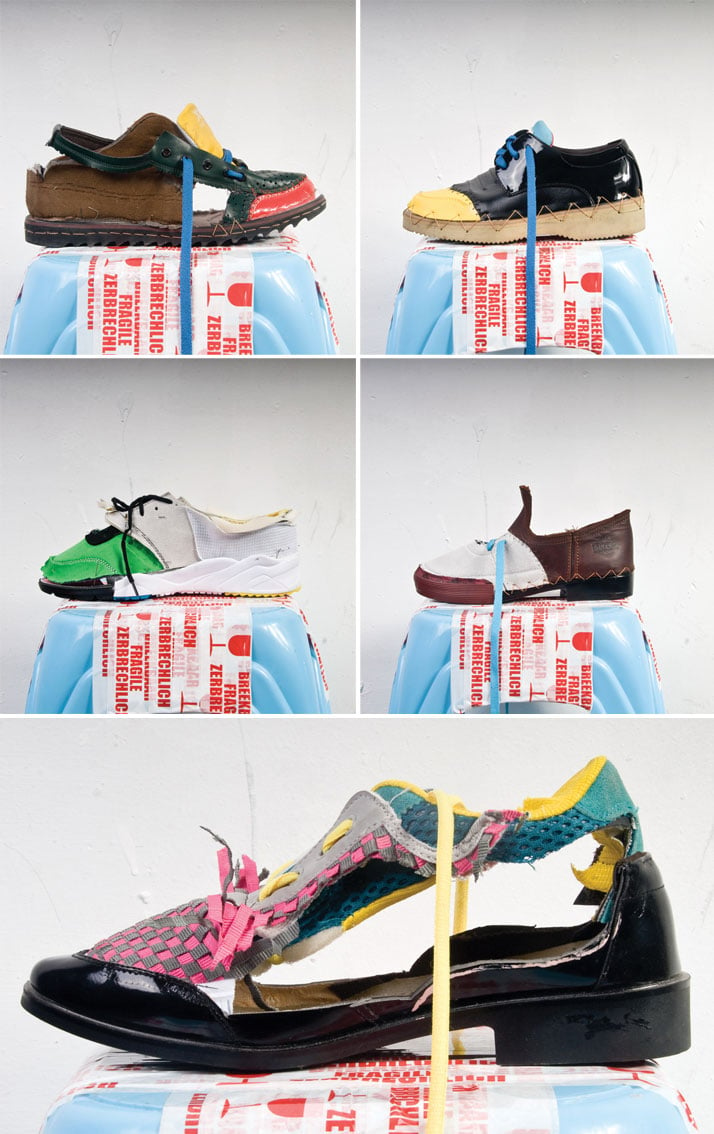
The TALES Pavilion by Luca Nichetto.
The TALES Pavilion by Luca Nichetto.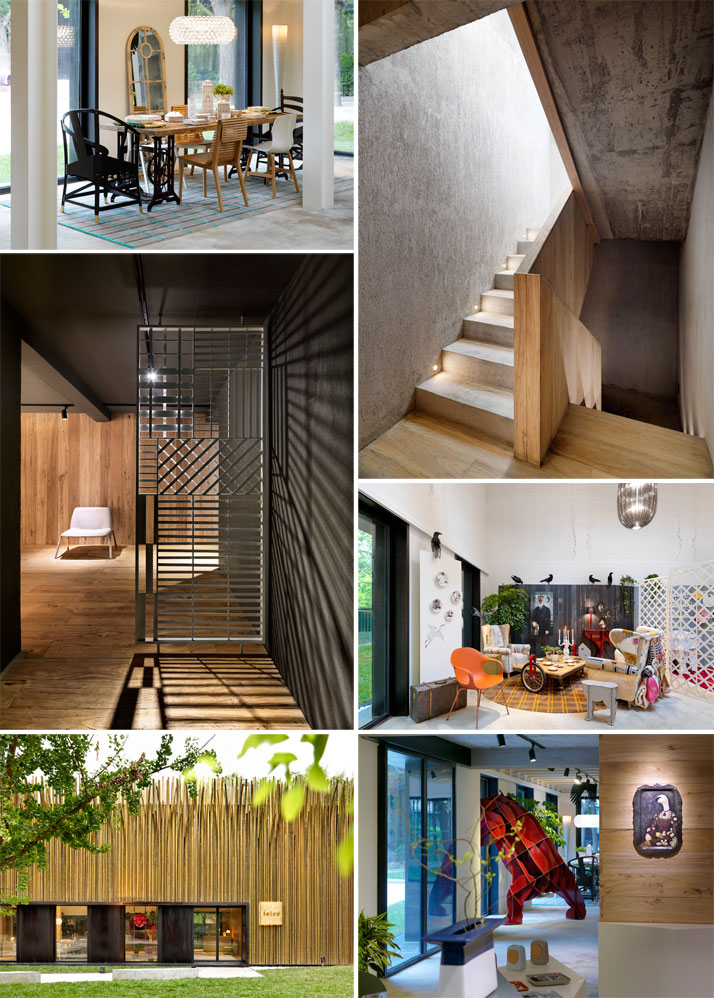
The Museum of bicycle parts on 49 Yingtao Hutong in Dashilar area. A Chinese family is using broken parts of bicycles to create jewellery, toys and other design products available for sale. Photo © Costas Voyatzis.
''Old-style New Poetry'' exhibition by Zhang Qiang. (CCD)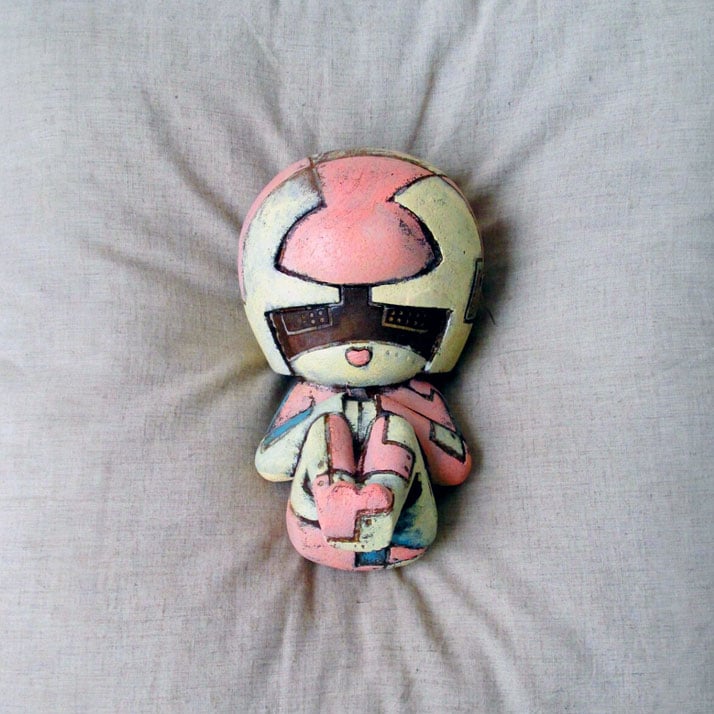
''Old-style New Poetry'' exhibition by Zhang Qiang who uses old furniture to create one-of-a-kind artworks. Photo © Costas Voyatzis. (CCD)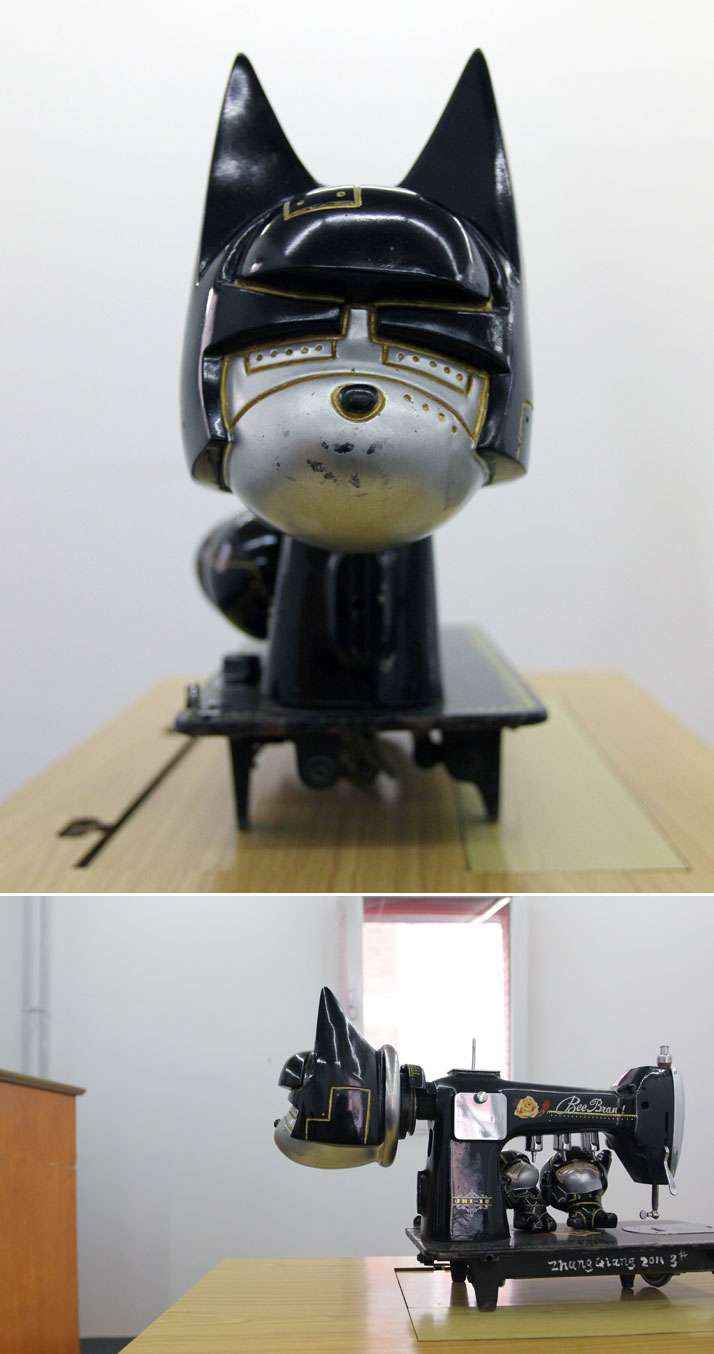
''Old-style New Poetry'' exhibition by Zhang Qiang who uses old furniture to create one-of-a-kind artworks. Photo © Costas Voyatzis. (CCD)
Nathan Zhang's Brandnü upcycling project. 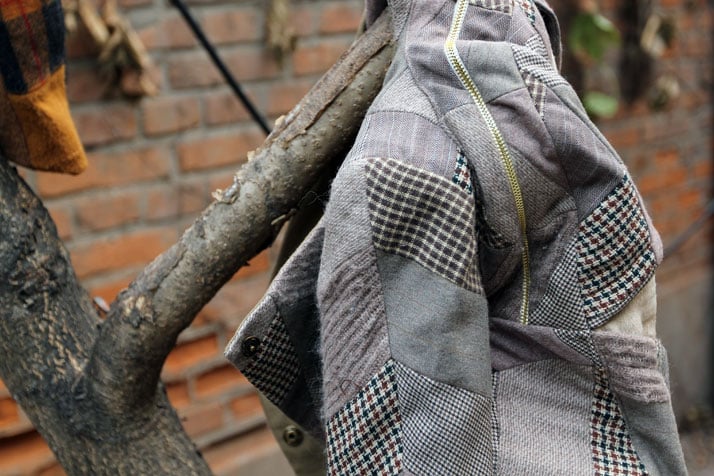
Brandnü is Beijing’s first charity-focused store that carries exclusively ethically sourced and eco-friendly goods made by rural women from different NGOs and social enterprises projects. The majority of brandnü artisans are female, disabled or unemployed and the network is partnered with “Rural Women,” a local development organization. Read Nathan Zhang's interview on CoolHunting.
3D photography exhibition by Matjaž TanÄiÄ on the walls of Dashilar's hutongs.
Lamps made from motorcycle part by Adrien Macera / Black Bridge Workshop. Photo © Costas Voyatzis.
Lamps made from motorcycle part by Adrien Macera / Black Bridge Workshop. Photo © Costas Voyatzis.
Tongji University Press presented an exhibition of their brand new ''Luminous City'' series inside the carriages of a train. (751)
YIFU furniture series by Studio Henny van Nistelrooy for Chinese furniture brand ACF:Home. Photo © Costas Voyatzis. (CCD)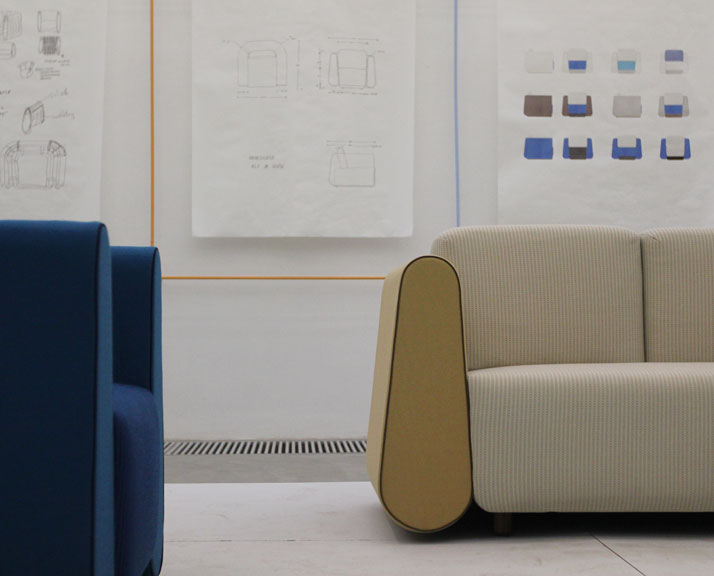
The flexible modular systems and volumes made of STYROFOAM by Dutch designer Eric Roelen.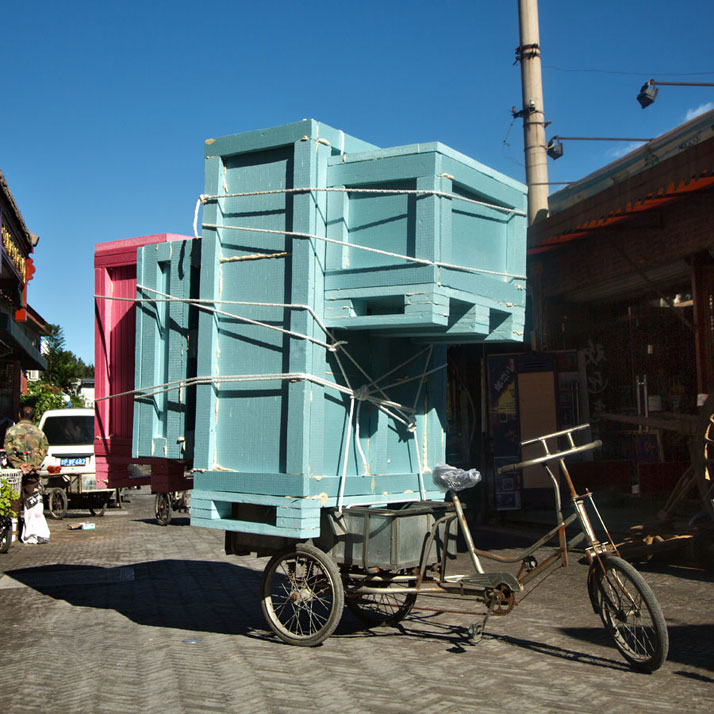
Handmade posters made on spot as part of the ''Fringe Density: Indigenous VS Contemporary Creativity'' project by URBANUS. Photo © Costas Voyatzis.
He Wenjue, ''In the Mood for Love'', Courtesy of the artist and Yang Gallery.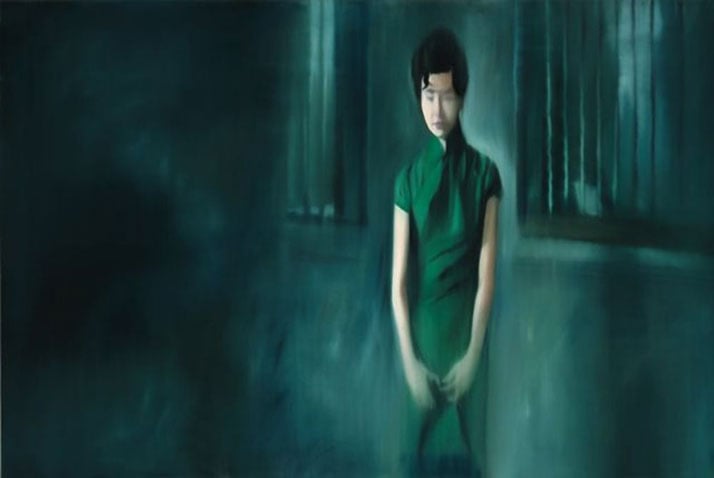
Han Wuzhou, National Anthem 2013, Installation, Plastic bags, Dimension Variable, 2013.
On view at the exhibition ''HERE AND NOW, FROM BOREDOM TO ENDLESS DELAYS'' at the Li Space. (CCD)














